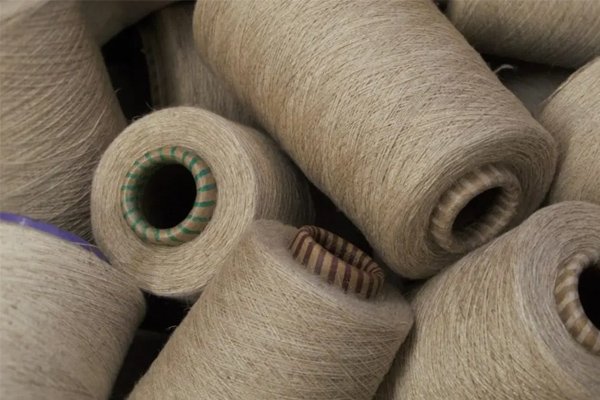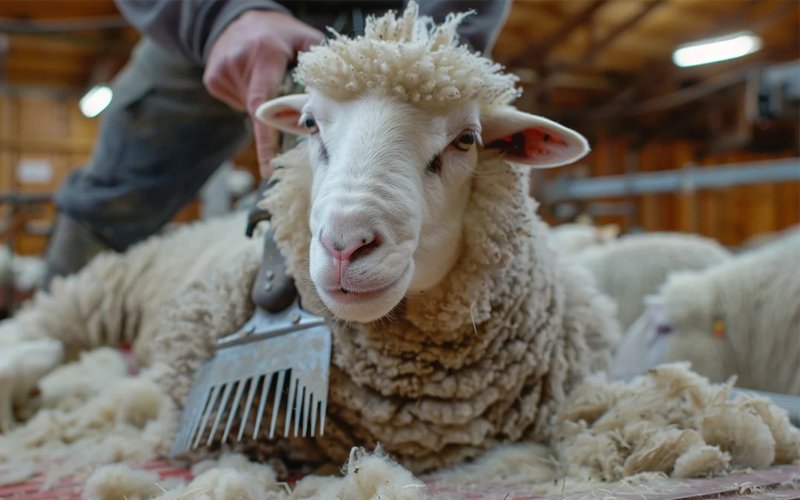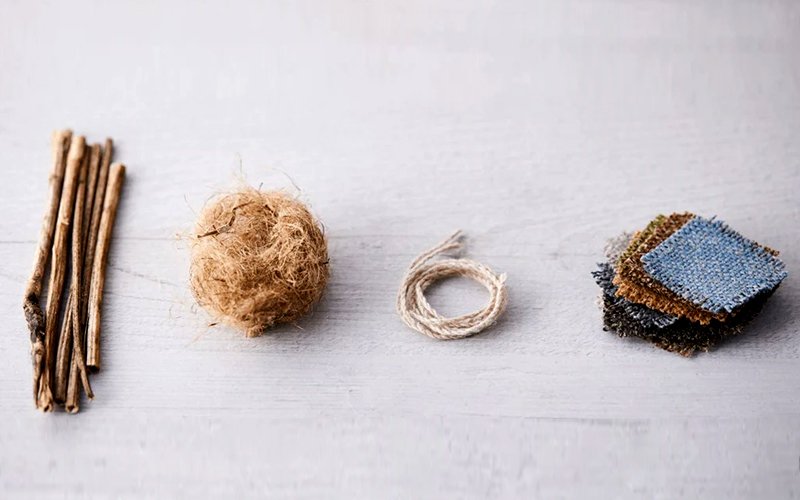
As the owner of a yarn factory, I often get asked how wool becomes yarn. Wool yarn is popular for clothing, especially sustainable fashion. It provides warmth and comfort, and many brands prefer it. Let me show you exactly how wool is made into yarn.
Wool yarn is made by shearing wool from sheep, cleaning it through scouring, combing or carding the fibers, and finally spinning them into yarn. Spinning aligns fibers and twists them together, making yarn strong and usable for weaving or knitting. Wool yarn is highly durable, insulating, breathable, and naturally flame-resistant, making it a popular choice for apparel and textiles.
Now let’s go deeper into each step and discover more about wool yarn.
How to weave with wool core spun yarn?
Core spun yarn is a versatile yarn we specialize in, and weaving with wool core spun yarn creates unique fabrics.
To weave with wool core spun yarn, set up the loom as you normally would, ensuring even tension. Wool core spun yarn combines a strong inner core (like nylon or polyester) with wool fibers wrapped around it. It’s great for weaving durable, elastic, and textured fabrics, ideal for clothing like jeans, jackets, and sportswear.

Detailed Guide to Weaving Wool Core Spun Yarn
Wool core spun yarn blends strength and softness, perfect for garments needing both durability and comfort.
Steps for weaving wool core spun yarn:
- Warp Preparation: Use durable wool core spun yarn for warp threads. Ensure even tension for consistent fabric quality.
- Weft Weaving: Pass the yarn horizontally (weft), maintaining consistent tension and spacing.
- Finishing Process: After weaving, gently wash and finish fabric to relax fibers and enhance softness.
| Application | Benefit | Example |
|---|---|---|
| Jeans | Durable and flexible | Denim pants |
| Outerwear | Warm, insulating, comfortable | Jackets, coats |
| Athletic Clothing | Elastic, breathable | Yoga pants, sports gear |
Is wool yarn environmentally friendly?
Many of my customers prefer sustainable products and often ask if wool yarn is eco-friendly.
Wool yarn is environmentally friendly because it’s renewable, biodegradable, and sustainable. Sheep regrow wool naturally every year without harm. Wool production uses fewer chemicals compared to synthetic fibers and contributes less pollution. It also decomposes naturally, reducing waste and environmental impact significantly compared to synthetic yarns.

Environmental Benefits of Wool Yarn
Wool is highly sustainable compared to synthetic materials. Here’s a clear comparison to help you understand:
| Factors | Wool Yarn | Synthetic Yarn (e.g., Acrylic) |
|---|---|---|
| Renewable Source | Yes | No (petroleum-based) |
| Biodegradable | Yes | No (slow decomposition) |
| Chemical Usage | Minimal | High |
Choosing wool yarn aligns perfectly with the sustainability goals of modern garment brands.
Is wool yarn antimicrobial?
Another advantage I frequently highlight is wool yarn’s natural antimicrobial property.
Yes, wool yarn is naturally antimicrobial. Wool fibers contain lanolin, which resists bacteria, mold, and mildew growth. This property keeps wool garments fresh, reduces odor, and makes wool clothing suitable for activewear, socks, and underwear, requiring less frequent washing.

How Wool’s Antimicrobial Nature Benefits Garments
Wool’s natural antimicrobial properties offer substantial advantages, including:
- Reduced Odor: Wool garments stay fresh and odor-free longer, especially beneficial for activewear.
- Less Frequent Washing: Saves water and extends garment lifespan.
- Improved Skin Comfort: Prevents bacterial growth, ideal for sensitive skin.
Brands choosing wool yarn can highlight these benefits to appeal to eco-conscious and practical consumers.
Does wool have a cooling effect?
Brands designing clothing for varied climates often ask if wool yarn can keep wearers cool.
Yes, wool has a cooling effect due to its moisture-wicking and breathable properties. Wool fibers absorb moisture from the skin and release it quickly, regulating body temperature and preventing overheating. Lightweight wool fabrics are excellent for keeping cool in warm weather, making them ideal for year-round garments.

How Wool Keeps You Cool in Warm Weather
Wool isn’t just for winter; its breathability helps regulate temperature effectively. Let’s explore:
| Wool Property | Cooling Effect Benefit | Ideal Uses |
|---|---|---|
| Breathability | Allows airflow to cool the body | Summer shirts, dresses |
| Moisture Wicking | Moves sweat away, keeping skin dry | Activewear, travel wear |
| Temperature Regulation | Maintains comfort in varied climates | Multi-seasonal clothing |
What is wool yarn best for?
Garment brands often ask what products wool yarn suits best. Here’s what I recommend based on my experience.
Wool yarn is best for clothing needing warmth, durability, and moisture regulation. Common uses include sweaters, socks, hats, scarves, jackets, and thermal wear. Wool is naturally insulating, breathable, and resilient, making it perfect for casual wear, formal attire, and performance clothing across seasons.

Best Applications of Wool Yarn
| Clothing Item | Why Wool Yarn? | Popularity |
|---|---|---|
| Sweaters | Excellent insulation, durable, soft | Very high |
| Socks | Antimicrobial, moisture-wicking, warmth | High |
| Hats & Scarves | Lightweight warmth, breathable comfort | High |
| Jackets & Coats | Natural insulation, weather resistance, durability | High |
Should I use acrylic or wool yarn?
Many clients ask me if they should choose acrylic or wool yarn for their products.
Wool yarn is typically better than acrylic yarn because it’s natural, sustainable, breathable, insulating, and antimicrobial. Acrylic is cheaper but synthetic, less breathable, and non-biodegradable. Wool is ideal for high-quality, sustainable clothing, while acrylic suits budget-friendly, easy-care items not requiring the same level of performance.

Comparing Wool and Acrylic Yarns
To help you choose, here’s a simple comparison:
| Feature | Wool Yarn | Acrylic Yarn |
|---|---|---|
| Sustainability | Natural, renewable | Synthetic, petroleum-based |
| Breathability | High | Low |
| Comfort & Feel | Soft, natural | Less natural, sometimes itchy |
| Price | Higher | Lower |
This clear comparison will guide brands in making informed choices based on their values and budget.
Conclusion
Understanding how wool is made into yarn reveals its sustainable, durable, and versatile qualities. Wool yarn’s natural benefits make it a top choice for sustainable fashion brands worldwide.




